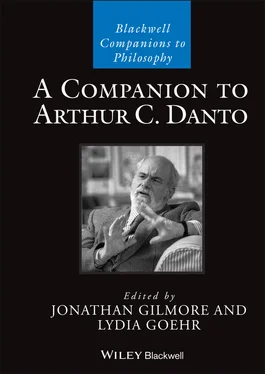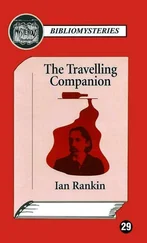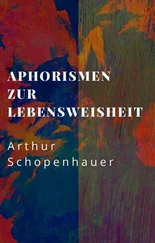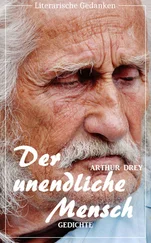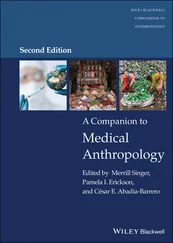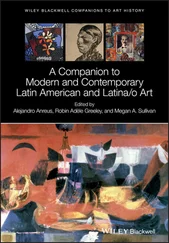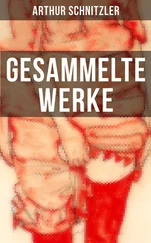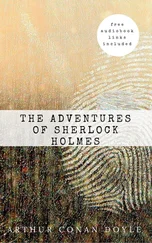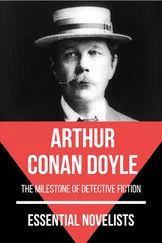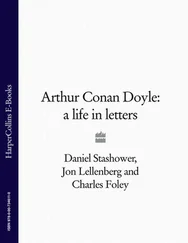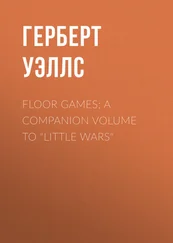A Companion to Arthur C. Danto
Здесь есть возможность читать онлайн «A Companion to Arthur C. Danto» — ознакомительный отрывок электронной книги совершенно бесплатно, а после прочтения отрывка купить полную версию. В некоторых случаях можно слушать аудио, скачать через торрент в формате fb2 и присутствует краткое содержание. Жанр: unrecognised, на английском языке. Описание произведения, (предисловие) а так же отзывы посетителей доступны на портале библиотеки ЛибКат.
- Название:A Companion to Arthur C. Danto
- Автор:
- Жанр:
- Год:неизвестен
- ISBN:нет данных
- Рейтинг книги:5 / 5. Голосов: 1
-
Избранное:Добавить в избранное
- Отзывы:
-
Ваша оценка:
- 100
- 1
- 2
- 3
- 4
- 5
A Companion to Arthur C. Danto: краткое содержание, описание и аннотация
Предлагаем к чтению аннотацию, описание, краткое содержание или предисловие (зависит от того, что написал сам автор книги «A Companion to Arthur C. Danto»). Если вы не нашли необходимую информацию о книге — напишите в комментариях, мы постараемся отыскать её.
Companion
A Companion to Arthur C. Danto
A Companion to Arthur C. Danto — читать онлайн ознакомительный отрывок
Ниже представлен текст книги, разбитый по страницам. Система сохранения места последней прочитанной страницы, позволяет с удобством читать онлайн бесплатно книгу «A Companion to Arthur C. Danto», без необходимости каждый раз заново искать на чём Вы остановились. Поставьте закладку, и сможете в любой момент перейти на страницу, на которой закончили чтение.
Интервал:
Закладка:
What I remember is that once he was home – whether the ramshackle villa in Roquebrune or the apartment in Rome – he disassembled his road sketches of fresh ink or swaths of color, leaving them to dry on some surface that would soon enough be reclaimed for more domestic use: the maid’s ironing, somebody’s homework, a meal or an evening glass of wine shared with my mother.
In an essay written to accompany an online exhibit of his woodcuts established several years ago by his alma mater, Wayne State University, my father wrote of his oeuvres: “I had no interest in just making art, I wanted them to enter life, and hang on other people’s walls. I wanted them to be a part of life.” And so they are, decades later, courtesy of CAFA and a dedicated consortium of colleagues, to be seen by people from all over the world, a thousand miles from where their life began.
The essay is reprinted with gracious permission from CAFA, Beijing, China. CAFA published a catalog on the occasion of its 2014 Arthur Danto symposium and exhibit.
2 Boundaries Crossed
ANDRÁS SZÁNTÓ
1 Times Square
There is a pedestrian island in front of the Marriott Marquis Hotel, in Times Square, between 45th and 46th streets. After recent design upgrades and the elimination of vehicle traffic, it is a far more welcoming place than it was in the late summer of 1988, when I arrived in Manhattan from Budapest to pursue a PhD in sociology. It so happened that my first accommodations in New York, provided by the City University’s Graduate School and University Center, were in a single-room-occupancy building a stone’s throw from the square, on West 44th Street. Some of my neighbors were former prostitutes. The neon signs in Times Square – still made of neon back then – would paint red spirals on my white walls at night.
The overpowering visual and cultural landscape of Times Square fascinated me. A whole universe of sinister and sublime surprises awaited me steps from my front door. The aforementioned pedestrian island, I soon learned, was not just any island. It was part of a site-specific artwork. A mysterious drone emanated from underneath the metal grille covering its triangular surface. The sound arose from somewhere deep below, like an invisible sonic tower, comingling with the cacophony of taxi honks, subway screeches, and all the human clamor of the “Crossroads of the World.” Once you caught on, it was impossible to tune out its mood and mind-altering presence.
The installation, titled Times Square , had been designed for that spot by an experimental composer and percussionist named Max Neuhaus (1939–2009). The sound sculpture, as the artist called it, had been running more or less continuously since 1977, under the care of the Dia Art Foundation. Together with a fellow student, I set about documenting it. We interviewed a homeless man who lived on top of the work, seemingly oblivious to its presence. We met a woman who came there often to meditate. We asked tourists what they thought about the sound as a form of public art. We filmed pedestrians from rooftops. When we were done, we presented our work at a visual-anthropology conference in Amsterdam, in a documentary film titled Sound from the Ground . 1
It was armed with a videocassette copy of Sound from the Ground that I entered Arthur Danto’s office for the first time, in 1991. I had since transferred to Columbia University, where I was working on a dissertation about art galleries and the transformation of the visual-art world into a modern cultural industry. The only hitch was, few of my professors in the sociology department knew much about art or its institutions and markets. It made sense to walk over to Philosophy Hall to seek out the advice of Arthur C. Danto. He was, after all, the man who coined the term artworld . And he was part of that world. At the peak of his powers as a teacher, theoretician, and critic, Danto was an intellectual rock star. A frequent presence in Manhattan’s glittering art scene, he had achieved an aura of public fame that is rarely attached to academics. As a 27-year-old student at the time, it took some nerve to knock on his door.
Arthur had just published an essay about Neuhaus in The Nation , where he famously held the art-critic post formerly occupied by Clement Greenberg. In a characteristic switching of gears from “mere” criticism to something deeper and more profound, he described Neuhaus’s sound sculpture as “a portable tabernacle, a bubble of sacral space encapsulated in midtown life, which flows unheedingly around it, save for those attracted as a momentary congregation” (Danto 1991). I was confident that my documentary would claim his interest. Not only was it about an artist he cared about, but it directly probed the categorical distinction between art and the ordinary world – Arthur’s driving preoccupation in the field of aesthetics. What better example of his “transfiguration of the commonplace” could one find than an artistic intervention that elevated Times Square, in all its grime and decrepitude, to a sacramental shrine?
Times Square was precisely the kind of art Arthur relished thinking about. It was about boundaries: between the traditional and the modern, the familiar and the transcendent, the aesthetic and the everyday. Such boundaries were for him always both philosophical and political, and he demonstrated exceptional skill in pinpointing them and explaining why they were relevant. He was, in this sense, a virtuoso of scrutinizing boundaries. As a person, he was fond of stepping over them.
2 Opening Doors
I became, as far as I know, Arthur’s last graduate student. He helped guide me into the art world conceptually, and also by opening doors in a practical sense, using his connections. Arthur approached his duties as a dissertation adviser with a light touch and in a spirit of avuncular generosity. He steered clear of the confrontational approach that some feel compelled to adopt in such circumstances. I got the feeling that he was somewhat bemused by sociology, a young discipline that operated on a more mundane plane than his own. But he was more than willing to come along for the ride.
In a way, I set out to pick up where Arthur had left off, to drill into the layers that his theoretical inquiry left untouched. For me, the art world was not a mental construct, but a living-breathing site of human and organizational interactions. As a sociologist, it behooved me to ask how, as an empirical matter, the transfiguration of the commonplace actually happened – as a product of the daily functioning of real-world institutions. It was clear to me that a key site of this organizational alchemy was the art gallery, where values were nurtured in a dual sense. It was in galleries that the first rough version of art history was written, much as newspapers have been said to have drafted the first version of our collective history. And it was in galleries that art, for better or for worse, intertwined with commerce. The value of each work would now be reflected in a sometimes exceptionally high price, which in turn denoted the artwork – in the currency of the marketplace – as belonging to a class apart from ordinary things. Arthur encouraged this investigation and took evident pleasure in crossing over to another discipline to see a world that fascinated him from a different point of view.
Approaching the art world as a social scientist rather than as a philosopher led me to different conclusions than Arthur’s, which, I believe, were complementary rather than contradictory to his. For example: from where did contemporary art’s limitless pluralism derive? In Arthur’s view, the relevant dynamics, here as elsewhere, were lodged in ideas. They were philosophical. At the risk of oversimplifying his position, he argued that a series of erasures over the course of the twentieth century had removed all previously necessary conditions placed upon art and led, step by step, to a final reckoning in Andy Warhol’s 1964 Brillo Box installation – the first work to directly, and at the right time in the flow of history, tackle the question of what distinguishes a work of art from an ordinary thing. The defining question of art having been reached, any compelling reason to move in any particular direction was rendered moot, according to Arthur’s theory. Discourse fractured in a thousand equally legitimate directions, “art having finally become vaporized in a dazzle of pure thought about itself, and remaining, as it were, solely as the object of its own theoretical consciousness” (Danto 1997, 31). Art had dissolved into a sea of open possibility. The show would go on, unshackled from historical prerogatives, but without a binding narrative. This was Danto’s so-called “end of art.”
Читать дальшеИнтервал:
Закладка:
Похожие книги на «A Companion to Arthur C. Danto»
Представляем Вашему вниманию похожие книги на «A Companion to Arthur C. Danto» списком для выбора. Мы отобрали схожую по названию и смыслу литературу в надежде предоставить читателям больше вариантов отыскать новые, интересные, ещё непрочитанные произведения.
Обсуждение, отзывы о книге «A Companion to Arthur C. Danto» и просто собственные мнения читателей. Оставьте ваши комментарии, напишите, что Вы думаете о произведении, его смысле или главных героях. Укажите что конкретно понравилось, а что нет, и почему Вы так считаете.
